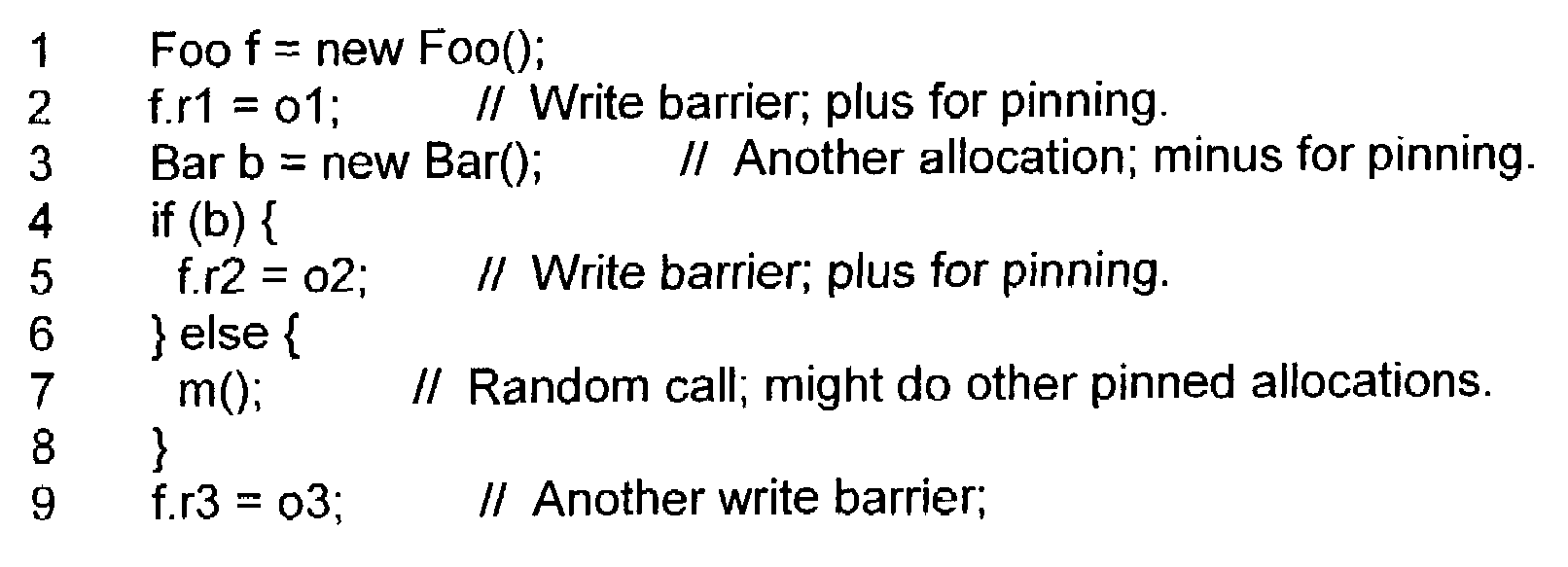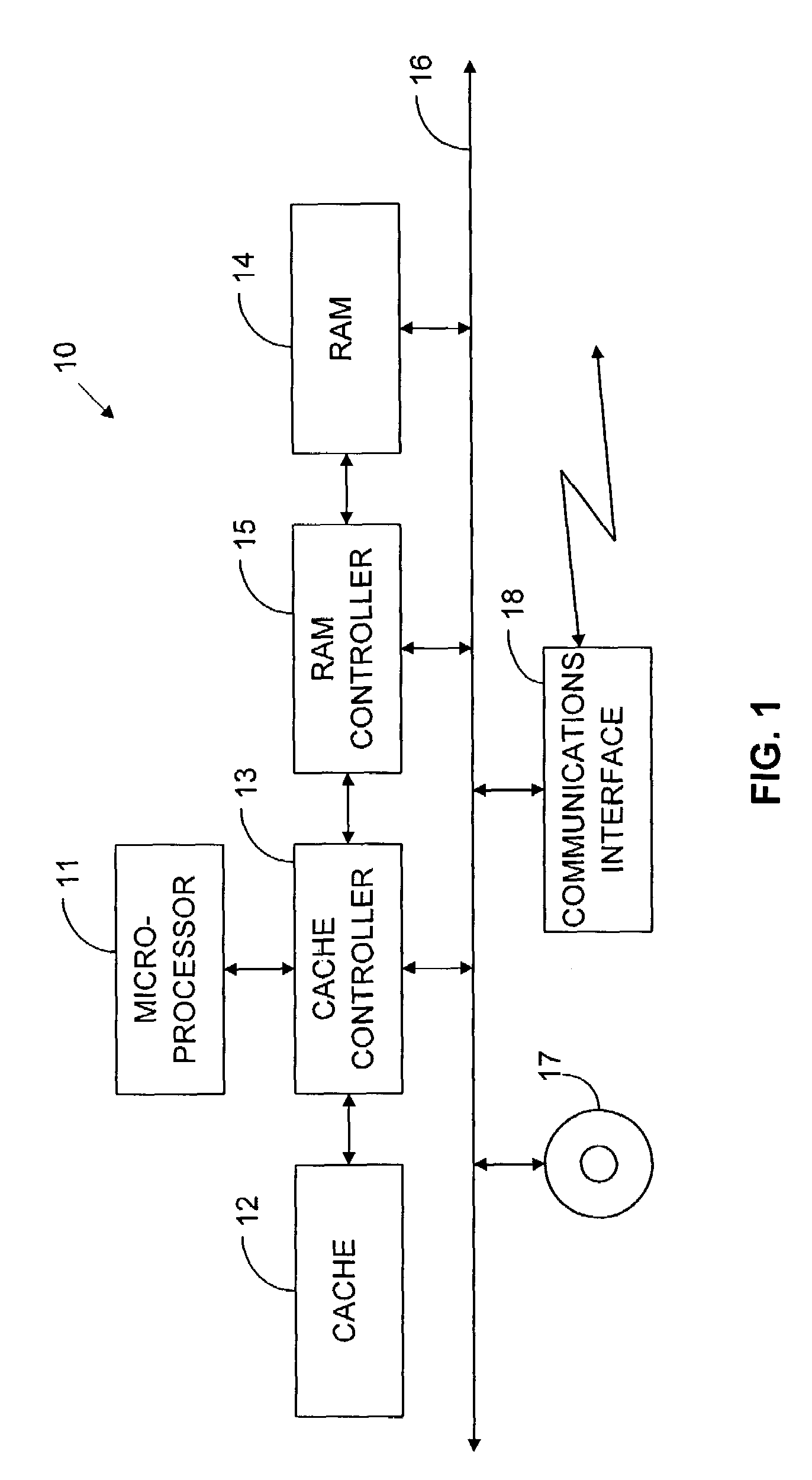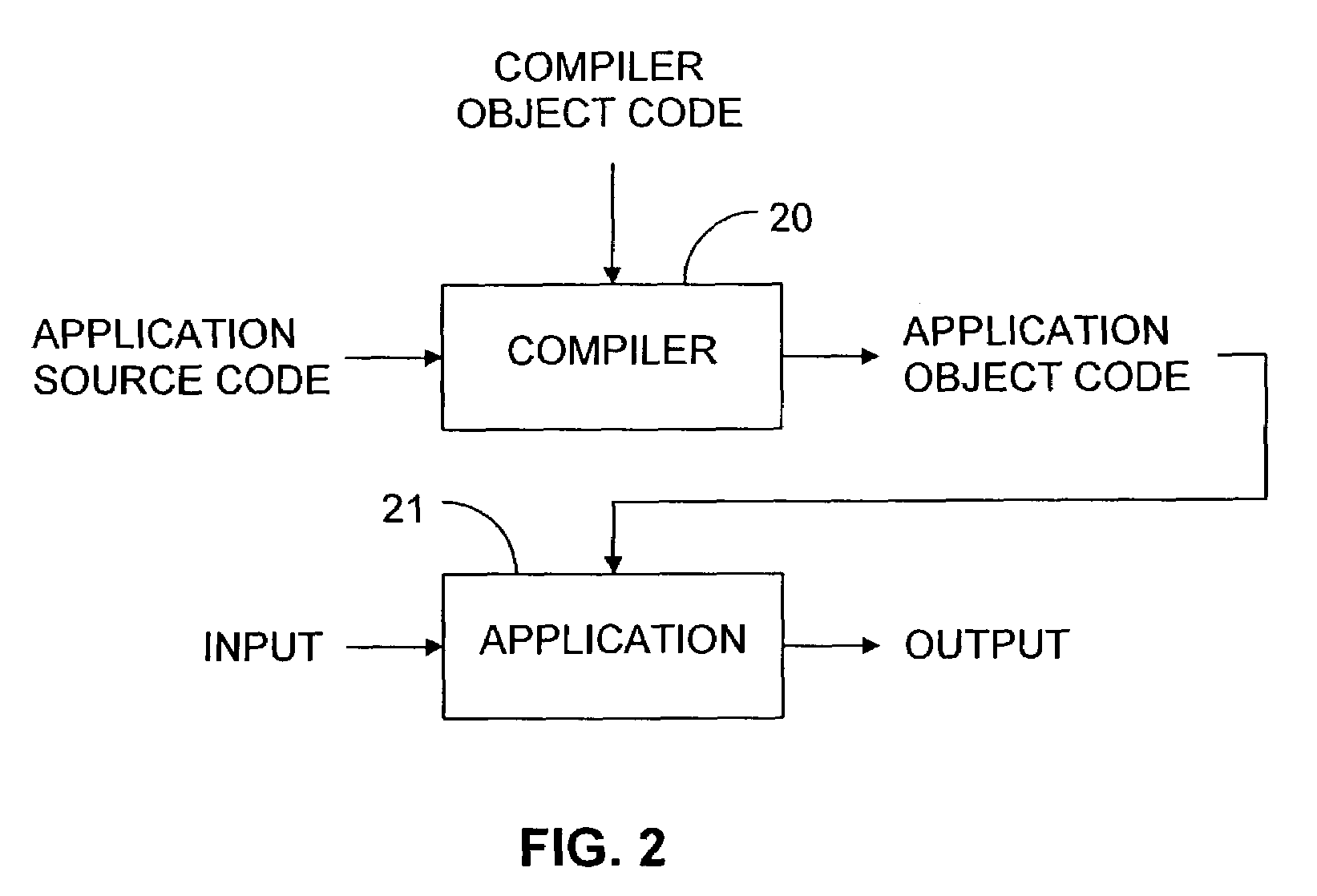Eliminating write barriers for young objects
a write barrier and object technology, applied in the field of memory management, to achieve the effect of reducing the performance cos
- Summary
- Abstract
- Description
- Claims
- Application Information
AI Technical Summary
Benefits of technology
Problems solved by technology
Method used
Image
Examples
Embodiment Construction
[0052]In FIG. 4, a heap 10 contains dynamically allocated objects. FIG. 4 depicts the heap as divided into a relatively small young generation 50 and a much larger old generation 52. When the mutator reaches a point at which the code calls on the run-time system to allocate memory space to an object, the run-time system will ordinarily allocate that space in the young generation 50. (Some systems make exceptions for large objects or arrays, which may instead be allocated in the old generation.)
[0053]During garbage-collection cycles, the garbage collector searches the heap 10 for objects that have been allocated but that the program will no longer use. There are many ways in which system resources can be divided between the mutator and the garbage collector. For the sake of concreteness, though, let us assume that a part of the allocation process is for the run-time system to determine how much room is left in the young generation 50 and, if the amount of room left is small, to preem...
PUM
 Login to View More
Login to View More Abstract
Description
Claims
Application Information
 Login to View More
Login to View More - R&D
- Intellectual Property
- Life Sciences
- Materials
- Tech Scout
- Unparalleled Data Quality
- Higher Quality Content
- 60% Fewer Hallucinations
Browse by: Latest US Patents, China's latest patents, Technical Efficacy Thesaurus, Application Domain, Technology Topic, Popular Technical Reports.
© 2025 PatSnap. All rights reserved.Legal|Privacy policy|Modern Slavery Act Transparency Statement|Sitemap|About US| Contact US: help@patsnap.com



